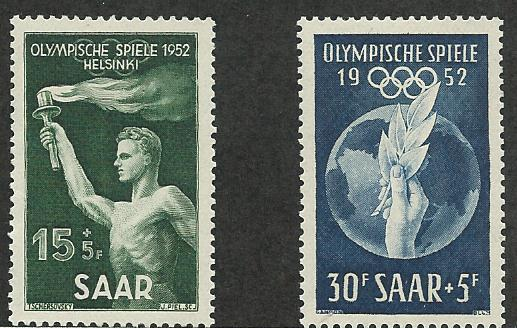36 competitors, 9 sports, 0 medals…
The fifteenth Summer Olympic Games took place between 19th July and 3rd August 1952. Helsinki, the capital of Finland, would be the hosts for the second Olympics held post-WW2. Over 16 days of competition, 4,955 athletes from 69 nations would compete in 149 events held across 17 sports. Of the 69 nations participating in the Games, seven would be making their debuts. The debuting countries and territories would be the Soviet Union (USSR), The People’s Republic of China, Indonesia, Israel, Thailand, Hong Kong and the Saar Protectorate.
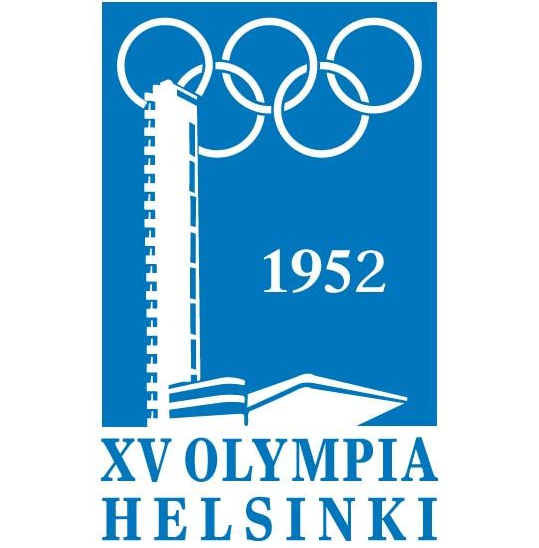
I am pretty sure that you know of six of these seven countries. The last one mentioned on this list above, I am not so confident that you will. If you have heard of Saarland, you probably possess a keen knowledge of Germany, its geography, and history. For even though the 1952 Helsinki Games would see Saar make their Olympic entrance, Helsinki would also be the sight of Saar’s Olympic farewell. Four years later, the Saar National Olympic Committee had ceased to exist. At the 1956 Olympic Games held in Melbourne, Saarland athletes would instead compete for the Unified All-German Team. How did a team manage to compete at one Olympic Games before fading out of existence before the next?
A Brief History of Saarland
Saarland is a state in the western part of Germany. It is the smallest of all the German states, with a population measuring just under a million people (990,509). The Saarland did not come into existence until after World War One. In 1920, the Territory of the Saar Basin was established and ratified by the League of Nations. At the time, the territory was under French occupation as part of the Treaty of Versailles. In 1935, the Territory of the Saar Basin would become part of Nazi Germany following a referendum. The Saarland would remain part of Germany for the duration of WW2.
However, following another Allied victory, the Saarland would once again find itself under French occupation. In 1946, the Saarland would be separated from the rest of Germany and renamed as the Saar Protectorate under France’s control. The Saarland would remain as a French protectorate for over a decade. A referendum to make Saar an ‘independent’ state under the European Union’s control would be rejected by a two-thirds majority. Two years later, in 1957, the Saar citizens would vote to become part West Germany. It has remained part of Germany ever since as the state of Saarland.
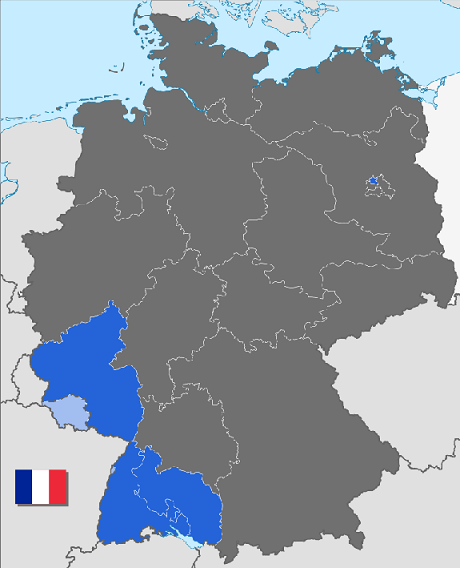
1952 Olympic Games
In 1950, the Saar Protectorate would form its own National Olympic Committee. With this formation, the Saarland would become eligible to send athletes to both the Winter and Summer Olympic Games in 1952. However, due to the nation’s size and lack of athletes competing in any of the four winter sports, Saar would have to pass on a trip to Oslo. However, six months later, the protectorate would be ready to send a team of 36 athletes to the Finnish capital Helsinki. On 5th May 1952, two months before the Games, the International Olympic Committee (IOC) would recognise Saar’s National Olympic Committee as its own separate NOC. Therefore in July 1952, the French protectorate would send thirty-one men and five women to Helsinki to participate in 32 different events across 9 sports. These sports would be athletics, boxing, canoeing, fencing, gymnastics, rowing, shooting, swimming and wrestling. Saar’s representatives ranged from 19-year-old canoeist Therese Zenz to 43-year-old rifle shooter Ludwig Graf.
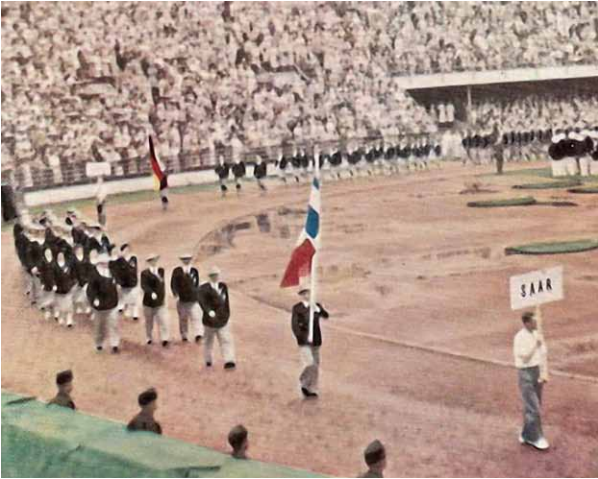
At the opening ceremony on 19th July, the Olympic team representing the Saar Protectorate would enter the Helsingin Olympiastadion with the nation’s flag (comprised of a white cross on a background made up of one-quarter blue and three-quarters red) being carried by men’s long jumper Toni Breder. Significantly, the nation that would follow Saar into the Helsinki Olympic Stadium would be West Germany, a country that Saar would be part of four years later.
Notable Results
For a ‘nation’ with a population of around 950,000 people making their Olympic debut, it would be difficult for Saar to come away with a medal or two. It would be some feat if they could manage to do such a thing. However, it will come as no surprise that the Saar Protectorate came away from their first and only Olympic Games without a single medal to their nation’s name. While the majority of the team’s competitors would struggle to progress past the preliminary stages of their events or would finish low down in their competition standings, Saar would, with perspective, have some notable results.
| Rank | Nation | Gold | Silver | Bronze | Total |
|---|---|---|---|---|---|
| 1 | United States | 40 | 19 | 17 | 76 |
| 2 | Soviet Union | 22 | 30 | 19 | 71 |
| 3 | Hungary | 16 | 10 | 16 | 42 |
| 4 | Sweden | 12 | 13 | 10 | 35 |
| 5 | Italy | 8 | 9 | 4 | 21 |
| 6 | Czechoslovakia | 7 | 3 | 3 | 13 |
| 7 | France | 6 | 6 | 6 | 18 |
| 8 | Finland | 6 | 3 | 13 | 22 |
| 9 | Australia | 6 | 2 | 3 | 11 |
| 10 | Norway | 3 | 2 | 0 | 5 |
| 44 | Saar | 0 | 0 | 0 | 0 |
Therese Zenz would reach the final of the K-1 500m sprint canoe event, finishing in 9th. Two-person team Heinrech Hess and Kurt Zimmer would finish 12 out of 18 teams in the final of the K-2 10,000m, which didn’t require a qualification stage. In another water-based sport, single sculler Gunther Schutt and the coxless four of Werner Biel, Hanns Peters and brothers Hans and Achim Krause-Wichmann would reach the rowing semi-finals before being eliminated. In Greco-Roman wrestling, Norbert Kohler and Erich Schmidt would reach the third round of the -57kg and -67kg competition before bowing out. Apart from these results, the majority of Saar’s competitors would fail to impact their respective events, apart from the fact that they were competing for Saar.
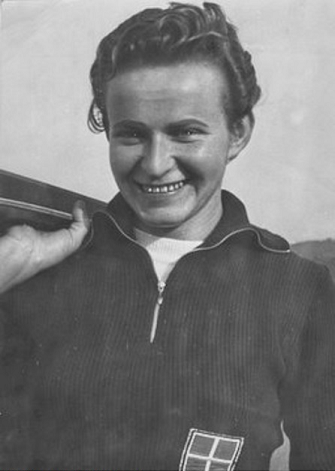
After sending 36 athletes to Helsinki on 19th July, these same 36 athletes would return home on 4th August empty-handed. With 0 medals but with better results than the nations below them, the Saar Protectorate would finish 44th of 69 countries in the Olympic medal table.
Aftermath
The Melbourne Olympic Games would take place between 22nd November and 8th December 1956. This edition could see 72 nations take part, including Ethiopia, Fiji, Kenya, Cambodia, the Federation of Malaya, Uganda, Liberia and North Borneo. However, there would be no place for the Saar Protectorate. Following the 1955 Saar status referendum, athletes and competitors from Saarland would now travel to the Olympics as part of the United Team of Germany ( a team comprising the West German, East German and Saarland Olympic Committees). In 1957, the Saarland National Olympic Committee would cease to exist in February 1957, with Saarland fully becoming part of West Germany. Since the Helsinki Olympics, athletes from Saarland competed for the United Team of Germany between 1956 and 1964, West Germany from 1968 to 1988 and reunified Germany from 1992 onwards.
Therese Zenz, the K-500m sprint canoer, who at 19 was the youngest member of the Saar team in Helsinki, would become the most successful member of the team post-Helsinki. In 1954, she would become a world champion representing Saar after winning gold in the 1954 Rowing World Championships. Representing the United Team of Germany, Zenz would win three Olympic silver medals, twice in the K-1 500m in Melbourne 1956 and Rome 1960 and another in the K2-500m in the latter Olympics. She would later become a coach for the West Germany rowing team. Toni Breder, the long jumper who carried the Saar Protectorate flag at the 1952 Olympic opening ceremony, would become Director of the Saarland Athletics Association. He would also hold the position of Chief Executive of the Saarland Sports Association until he died in 1989, aged 64.
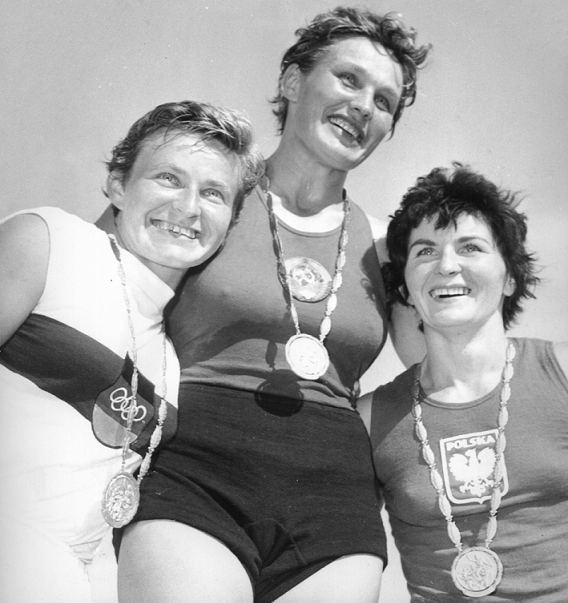
Along with North Borneo (1956), the British West Indies (1960), the Yemeni Democratic Republic (1988), the Unified Team (1992) and Serbia and Montenegro (2004), Saar forms part of a shortlist of one-time Olympic ‘nations’. However, the Saar Protectorate team of 1952 was the first and, thus far, the most historically significant Olympic competitors. A forgotten piece of history taken from the early stages of the Cold War, Saar’s participation at the 1952 Games in Helsinki is an obscure but significant moment in Olympic history and 20th-century history as a whole.
